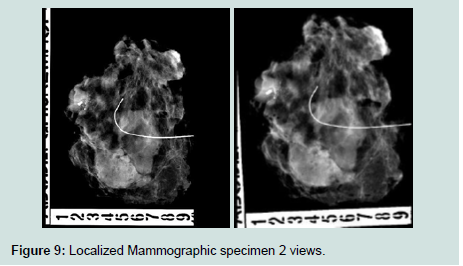

The responsibility for this success includes improvements in imaging technologies, but is also due to a higher degree of health awareness and educational programs. There is sound evidence that the recent decline in cancer mortality observed in several countries is due to early detection to a significant extent. The early detection of breast cancer has moved into the very focus of primary health care. In 2000, the last year for which global data exists, approximately 400,000 women died from breast cancer, representing 1.6 per cent of all female deaths. Industrial nations with the highest cancer rates include the U.S.A, Italy, Australia, Germany, the Netherlands, Canada and France. More than one million women are newly diagnosed with breast cancer each year. The examiner can identify a low-risk group that can be vigilantly observed and a high-risk group that should receive immediate biopsy due to an elevated breast cancer risk. Sonoelastography yields additional diagnostic information in the evaluation of BI-RADS ®-US 3 lesions of the breast. With a benign elastogram (low-risk group), the posttest POD decreased to 2.2%. In patients with a suspicious elastogram (high-risk group), the posttest POD was significantly higher (13.2%, p = 0.041) and the positive LR was 3.2 (95% CI: 1.7–5.9). The pretest POD was 4.5% (95% confidence interval (CI): 2.1–9.0). In our collection of BI-RADS ®-US 3 cases there were 169 benign and eight malignant lesions. Furthermore, we analyzed the false-negative and false-positive cases and performed a model calculation to determine how elastography could affect the proceedings in population screening. Pretest and posttest probability of disease (POD), sensitivity (SE), specificity (SP), positive (PPV) and negative predictive values (NPV) and likelihood-ratios (LR) were calculated. Elastograms were evaluated according to the Tsukuba Elasticity Score. MethodsĪ group of 177 breast lesions that were classified BI-RADS ®-US 3 were additionally examined with real-time sonoelastography. In our study, we focus exclusively on BI-RADS ®-US 3 lesions and hypothesize that sonoelastography as an adjunct to conventional ultrasound can identify a high-risk-group and a low-risk-group within these patients.

Lesions of the breast that are classified BI-RADS ®-US 3 by ultrasound are probably benign and observation is recommended, although malignancy may occasionally occur.


 0 kommentar(er)
0 kommentar(er)
